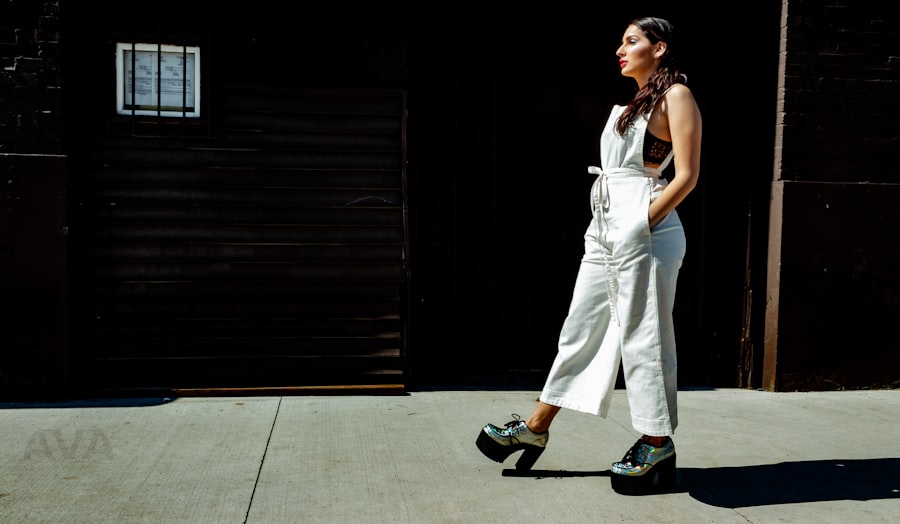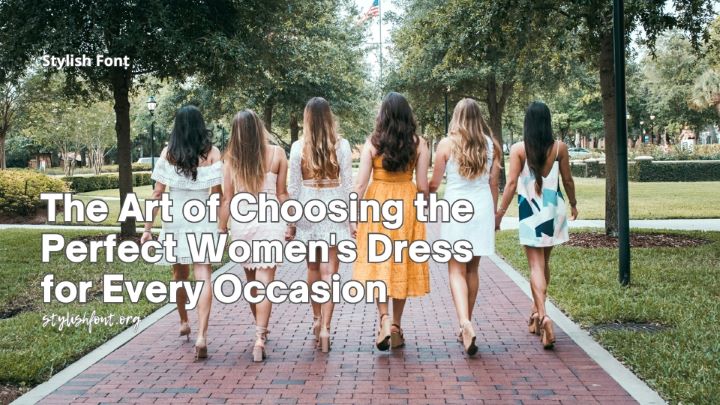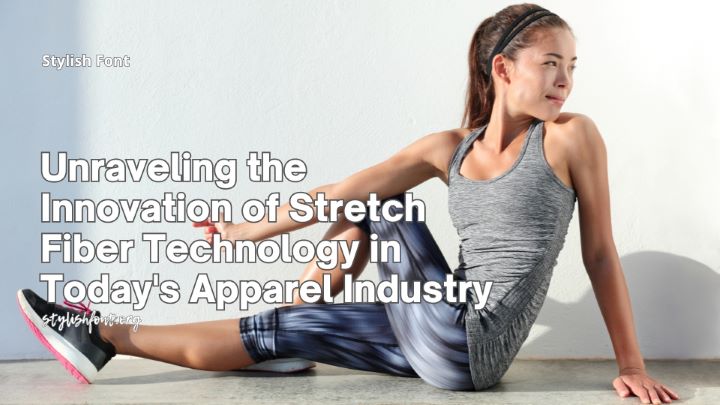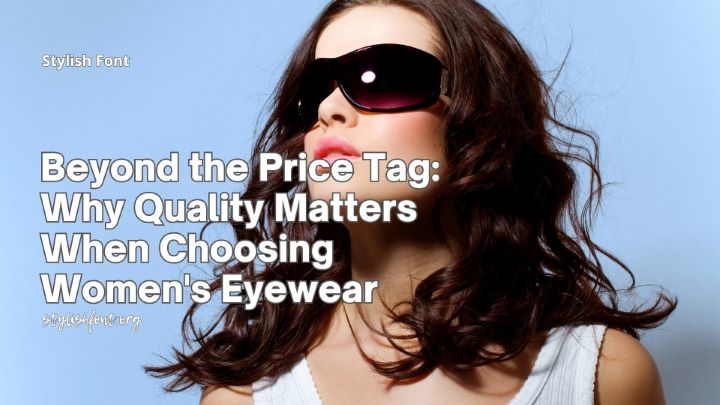In recent years, the fashion industry has witnessed a significant shift towards the concept of slow fashion, a movement that emphasizes quality, sustainability, and ethical production over the rapid turnover of trends characteristic of fast fashion. This paradigm shift is not merely a fleeting trend; it represents a growing awareness among consumers about the implications of their purchasing decisions. Slow fashion advocates for a more thoughtful approach to clothing, encouraging individuals to consider the origins of their garments, the materials used, and the labor conditions under which they were produced.
As consumers become increasingly educated about the environmental and social ramifications of their choices, the slow fashion movement has gained momentum, fostering a community that values craftsmanship and sustainability. The rise of slow fashion can be attributed to various factors, including heightened awareness of climate change, social justice issues, and the detrimental effects of consumerism on both the planet and society. Documentaries, social media campaigns, and influential voices within the fashion industry have played pivotal roles in spreading the message of slow fashion.
As a result, many individuals are now seeking alternatives to the fast-paced fashion cycle, opting for brands that prioritize ethical practices and sustainable materials. This movement not only challenges the status quo but also encourages a deeper connection between consumers and their clothing, fostering a sense of responsibility and mindfulness in their purchasing habits.
Key Takeaways
- Slow fashion is a movement focused on ethical and sustainable practices in the fashion industry.
- Fast fashion has a significant negative impact on the environment, including pollution and waste.
- Embracing ethical and sustainable practices in fashion involves supporting fair wages and working conditions.
- Choosing quality over quantity in fashion leads to longer-lasting and more sustainable wardrobe choices.
- Supporting local and artisanal brands helps promote sustainable and ethical fashion practices.
The Environmental Impact of Fast Fashion
Fast fashion has become synonymous with environmental degradation, as its business model relies on mass production and rapid consumption. The industry is notorious for its significant carbon footprint, with clothing production contributing to greenhouse gas emissions at an alarming rate. The extraction of raw materials, such as cotton and polyester, often involves harmful agricultural practices that deplete natural resources and pollute ecosystems.
Additionally, the disposal of garments contributes to overflowing landfills, where synthetic fibers can take hundreds of years to decompose. The sheer volume of clothing produced and discarded each year underscores the urgent need for a more sustainable approach to fashion. Moreover, fast fashion’s reliance on cheap labor in developing countries raises ethical concerns regarding workers’ rights and safety.
Many garment workers endure poor working conditions, long hours, and minimal pay, all in the name of producing affordable clothing for consumers in wealthier nations. This exploitation not only perpetuates cycles of poverty but also highlights the stark inequalities within the global fashion supply chain. As awareness of these issues grows, consumers are increasingly motivated to seek out brands that prioritize environmental stewardship and ethical labor practices, paving the way for a more responsible fashion industry.
Embracing Ethical and Sustainable Practices in Fashion

The slow fashion movement champions ethical and sustainable practices as essential components of a responsible wardrobe. Brands that align with these principles often prioritize transparency in their supply chains, ensuring that consumers can trace the origins of their clothing. This transparency fosters trust between brands and consumers, allowing individuals to make informed choices about their purchases.
Many slow fashion brands also focus on using eco-friendly materials, such as organic cotton, Tencel, or recycled fabrics, which minimize environmental impact while still delivering high-quality products. In addition to material choices, ethical production practices are crucial in the slow fashion movement. Many brands are committed to fair labor practices, ensuring that workers receive fair wages and work in safe conditions.
By supporting these brands, consumers can contribute to a more equitable fashion industry that values human rights alongside profit margins. Furthermore, some slow fashion brands engage in initiatives that give back to communities or support local artisans, reinforcing the idea that fashion can be a force for good rather than exploitation.
Choosing Quality Over Quantity: The Benefits of Slow Fashion
| Benefits of Slow Fashion | Metrics |
|---|---|
| Environmental Impact | Reduction in carbon footprint, water usage, and waste production |
| Quality of Products | Longer lifespan of clothing, higher quality materials |
| Ethical Production | Fair wages, safe working conditions, and support for local artisans |
| Community Support | Encouragement of local economies and small businesses |
One of the core tenets of slow fashion is the emphasis on quality over quantity. In a world where fast fashion encourages consumers to buy more at lower prices, slow fashion advocates for investing in fewer pieces that are well-made and designed to last. This shift not only benefits the environment by reducing waste but also enhances the overall wardrobe experience for individuals.
High-quality garments often feature superior craftsmanship and materials, resulting in clothing that withstands the test of time both in style and durability. Choosing quality over quantity also fosters a more intentional approach to personal style. With fewer items in their wardrobes, individuals can curate collections that reflect their unique tastes and values.
This intentionality leads to greater satisfaction with clothing choices and reduces the impulse to constantly chase fleeting trends. As consumers embrace this philosophy, they may find themselves developing a deeper appreciation for their clothing and a stronger connection to the stories behind each piece.
Supporting Local and Artisanal Brands
Supporting local and artisanal brands is a vital aspect of the slow fashion movement that promotes community engagement and economic sustainability. By choosing to purchase from local designers or artisans, consumers can contribute to their local economies while also reducing the carbon footprint associated with shipping goods over long distances. Local brands often prioritize craftsmanship and unique designs that reflect cultural heritage, offering consumers one-of-a-kind pieces that stand apart from mass-produced items.
Artisanal brands frequently employ traditional techniques that have been passed down through generations, resulting in garments that carry a sense of history and authenticity. By investing in these brands, consumers not only acquire high-quality clothing but also support the preservation of cultural practices and skills that might otherwise be lost in an increasingly homogenized global market. This connection between consumers and local artisans fosters a sense of community and shared values, reinforcing the idea that fashion can be both beautiful and meaningful.
Embracing Timeless and Versatile Pieces

The Pitfalls of Fast Fashion
Fast fashion often promotes fleeting styles that quickly go out of vogue, leading to a cycle of constant consumption. This approach encourages individuals to continuously buy and discard clothes, contributing to the growing problem of textile waste.
The Benefits of Timeless Designs
In contrast, slow fashion encourages individuals to invest in versatile pieces that can be styled in multiple ways and worn across various occasions. By focusing on timeless designs that transcend seasonal trends, consumers can build wardrobes that remain relevant year after year. Timeless pieces often feature classic silhouettes and neutral color palettes that allow for easy mixing and matching with other items in one’s wardrobe.
Cultivating a Cohesive Personal Style
As individuals embrace this approach, they may find themselves cultivating a more cohesive personal style while minimizing clutter in their closets. This shift in mindset can lead to a more intentional and thoughtful approach to fashion, where individuals prioritize quality over quantity.
Reducing Waste and Promoting Longevity
Ultimately, investing in timeless pieces aligns with the slow fashion ethos by promoting longevity and reducing waste. By choosing to invest in high-quality, versatile pieces, individuals can make a positive impact on the environment while also building a wardrobe that truly reflects their personal style.
Mindful Consumption: Making Informed Fashion Choices
Mindful consumption is at the heart of the slow fashion movement, encouraging individuals to reflect on their purchasing habits and make informed choices about their clothing. This approach involves considering factors such as material sourcing, production methods, and brand ethics before making a purchase. By taking the time to research brands and understand their values, consumers can align their spending with their personal beliefs regarding sustainability and social responsibility.
Mindful consumption also extends beyond individual purchases; it encompasses a broader awareness of one’s overall impact on the environment and society. By recognizing the interconnectedness of fashion with global issues such as climate change and labor rights, individuals can become advocates for change within the industry. This shift towards conscious consumerism empowers individuals to use their purchasing power as a tool for positive impact, supporting brands that prioritize ethical practices while holding others accountable for their actions.
Extending the Lifespan of Clothing: Tips for Care and Repair
One of the most effective ways to embrace slow fashion is by extending the lifespan of clothing through proper care and repair techniques. Many garments are discarded prematurely due to minor wear and tear that could easily be fixed with some basic sewing skills or simple maintenance practices. By learning how to care for clothing—such as washing at lower temperatures, air drying instead of using a dryer, or storing items properly—consumers can significantly reduce their environmental impact while enjoying their favorite pieces for longer.
Repairing clothing is another essential aspect of extending its lifespan. Rather than discarding items with small rips or missing buttons, individuals can learn basic sewing techniques or seek out local tailors who specialize in mending garments. This practice not only saves money but also fosters a deeper connection to clothing by valuing each piece’s history and story.
As more people embrace repair culture, it contributes to a shift away from disposable fashion towards a more sustainable mindset.
Embracing Second-Hand and Vintage Fashion
The second-hand and vintage fashion market has experienced a resurgence as part of the slow fashion movement, offering consumers an alternative to new purchases while promoting sustainability. Thrift stores, consignment shops, and online platforms dedicated to pre-owned clothing provide opportunities for individuals to find unique pieces with character while reducing waste associated with fast fashion production. Embracing second-hand shopping allows consumers to express their personal style without contributing to environmental degradation.
Vintage clothing carries its own charm and history, often reflecting distinct styles from past decades that are no longer available in mainstream stores. By incorporating vintage pieces into their wardrobes, individuals can create distinctive looks that stand out from mass-produced trends while celebrating fashion’s rich history. Additionally, purchasing second-hand items reduces demand for new production, ultimately lessening the overall environmental impact of the fashion industry.
The Social Impact of Slow Fashion: Supporting Fair Wages and Working Conditions
The social implications of slow fashion extend beyond environmental concerns; they encompass issues related to labor rights and fair wages within the garment industry. Many slow fashion brands prioritize ethical production practices by ensuring that workers receive fair compensation for their labor while working in safe conditions. This commitment not only uplifts marginalized communities but also fosters a sense of dignity among workers who contribute to creating beautiful garments.
By supporting brands that adhere to fair labor practices, consumers play an active role in promoting social justice within the fashion industry. This shift towards ethical consumption encourages transparency in supply chains while holding companies accountable for their treatment of workers. As awareness grows around these issues, more individuals are motivated to seek out brands that prioritize human rights alongside profit margins—ultimately contributing to a more equitable global economy.
Embracing Slow Fashion as a Lifestyle: Tips for Transitioning to a Sustainable Wardrobe
Transitioning to a slow fashion lifestyle requires intentionality and commitment but can be incredibly rewarding for both individuals and the planet. One effective strategy is to start by assessing one’s current wardrobe—identifying items that are rarely worn or no longer spark joy—and considering donating or selling them rather than discarding them outright. This decluttering process not only creates space for new pieces but also encourages mindful consumption moving forward.
Building a sustainable wardrobe involves setting clear goals regarding future purchases—such as prioritizing quality over quantity or seeking out ethical brands—and being patient throughout this journey toward conscious consumerism. Individuals may find it helpful to create a capsule wardrobe consisting of versatile staples that can be mixed and matched effortlessly while reflecting personal style preferences. By embracing slow fashion as a lifestyle choice rather than just a trend, individuals can cultivate deeper connections with their clothing while contributing positively to both society and the environment.
In conclusion, slow fashion represents a transformative movement within an industry often criticized for its environmental impact and ethical shortcomings. By understanding its principles—such as prioritizing quality over quantity, supporting local artisans, embracing timeless designs, practicing mindful consumption, extending garment lifespans through care and repair techniques—individuals can actively participate in reshaping the future of fashion into one that values sustainability alongside style. As more people embrace this ethos as part of their daily lives, they contribute not only to personal fulfillment but also toward creating a more equitable world through conscious choices made within an interconnected global community.
FAQs
What is slow fashion?
Slow fashion is a movement and approach to fashion that prioritizes quality, sustainability, and ethical production. It encourages consumers to buy fewer, higher quality clothing items that are made to last, and to be mindful of the environmental and social impact of their fashion choices.
How is slow fashion different from fast fashion?
Slow fashion is the opposite of fast fashion, which is characterized by cheap, disposable, and mass-produced clothing that often has a high environmental and social cost. Slow fashion focuses on creating timeless, durable pieces, using sustainable materials, and ensuring fair wages and working conditions for garment workers.
What are the benefits of supporting slow fashion?
Supporting slow fashion can lead to a variety of benefits, including reducing environmental impact, supporting ethical labor practices, promoting local and small-scale businesses, and investing in higher quality, longer-lasting clothing items.
How can I participate in slow fashion?
You can participate in slow fashion by being mindful of your clothing purchases, choosing quality over quantity, supporting sustainable and ethical fashion brands, and considering the environmental and social impact of your fashion choices. Additionally, you can also consider upcycling, repairing, and recycling clothing to extend their lifespan.





